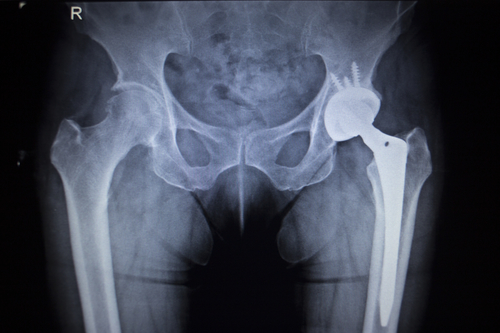The current healthcare environment in America has been driven by the concepts of quality, cost containment and value. Based on this, the federal government is starting a program that will incentivize physicians to maximize and reduce the patient’s risk factors prior to hip and knee replacement surgery. In fact, a physician’s reimbursement for the procedure will be directly related to post-surgical outcomes of their patients. Because of this, there are many studies right now looking at “tools” to predict high-risk patients to figure out if those patients should even be offered a knee replacement or if there are pre-surgical ways to reduce the risk factors.
There was an article published by Dr. David Manning in the American Academy of Orthopedic Surgeries Journal, this January. This report looked at risk prediction tools for hip and knee replacement surgery.
In this article, Dr. Manning noted that total knee  and total hip surgeries comprised a largest procedural expenditure in the Medicare budget. And the complication rate for these surgeries varies anywhere between 2 percent and 14 percent. Higher complication rates are associated with the elderly and patients with additional disorders and high risk factors. Between 1991 and 2010, the mean number of comorbidities among Medicare patients undergoing elective total knee replacement nearly doubled from 1.2 to 2.1, and this trend is expected to continue.
and total hip surgeries comprised a largest procedural expenditure in the Medicare budget. And the complication rate for these surgeries varies anywhere between 2 percent and 14 percent. Higher complication rates are associated with the elderly and patients with additional disorders and high risk factors. Between 1991 and 2010, the mean number of comorbidities among Medicare patients undergoing elective total knee replacement nearly doubled from 1.2 to 2.1, and this trend is expected to continue.
Patients treated with total knee replacement show that the rate of diabetes mellitus increased from 10.5 percent to 24.2 percent. The rate of obesity increased from 4 percent to 10 percent during the same period. Complications that are seen after total joint replacement such as infection, blood clots, heart attacks, pneumonia, are associated with poor patient outcomes, and in addition represented a substantial cost burden to the American healthcare system.
Quality Improvement Initiatives Target Total Hip and Knee Replacement Surgery
Over the next five years, elective total hip and total knee replacements will be incorporated into several quality improvement initiatives, developed by the Center for Medicare and Medicaid Services. Because risk prediction tools or risk calculations are being developed, physicians are receiving help to determine who is eligible for a knee replacement or hip surgery. It is also working to understand if those risk factors can be modified pre-surgical efforts. Risk calculators at this point are noting that patients with diabetes, obesity, and that are smokers place them at much higher risk than patients that do not have those diagnoses or habits.
The risk prediction tools for hip and knee replacement surgery have the potential to serve the interest of patients and surgeons. It is important at this point that these tools are of high quality and they can accurately predict who will develop a postoperative complication.
So, if your surgeon starts talking to you as a patient about weight loss, controlling your blood sugar if you are diabetic, stopping smoking, improving your nutrition and overall health, it is because this is now going to become a mandatory requirement for patients undergoing hip and knee replacement.

Recent Comments